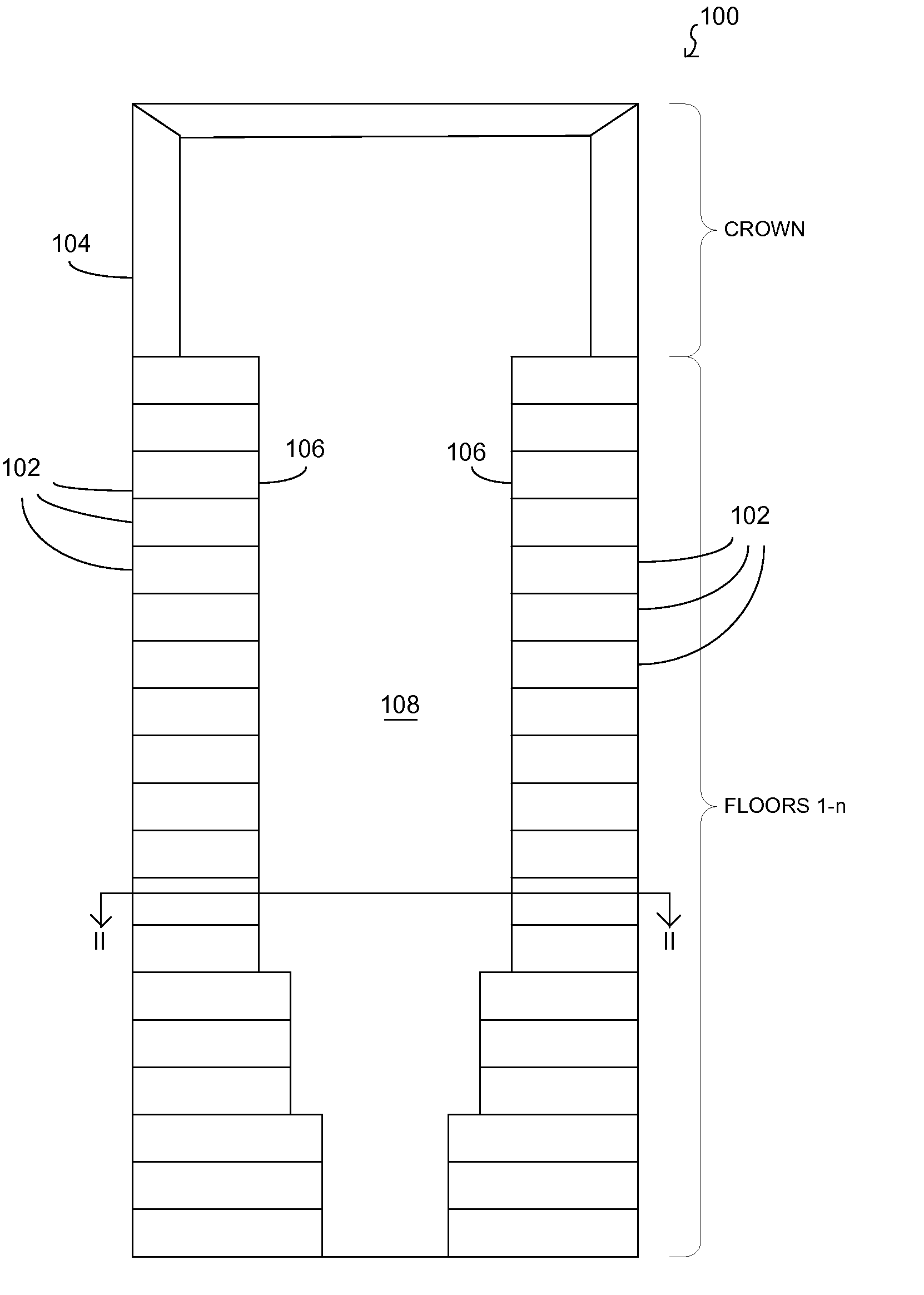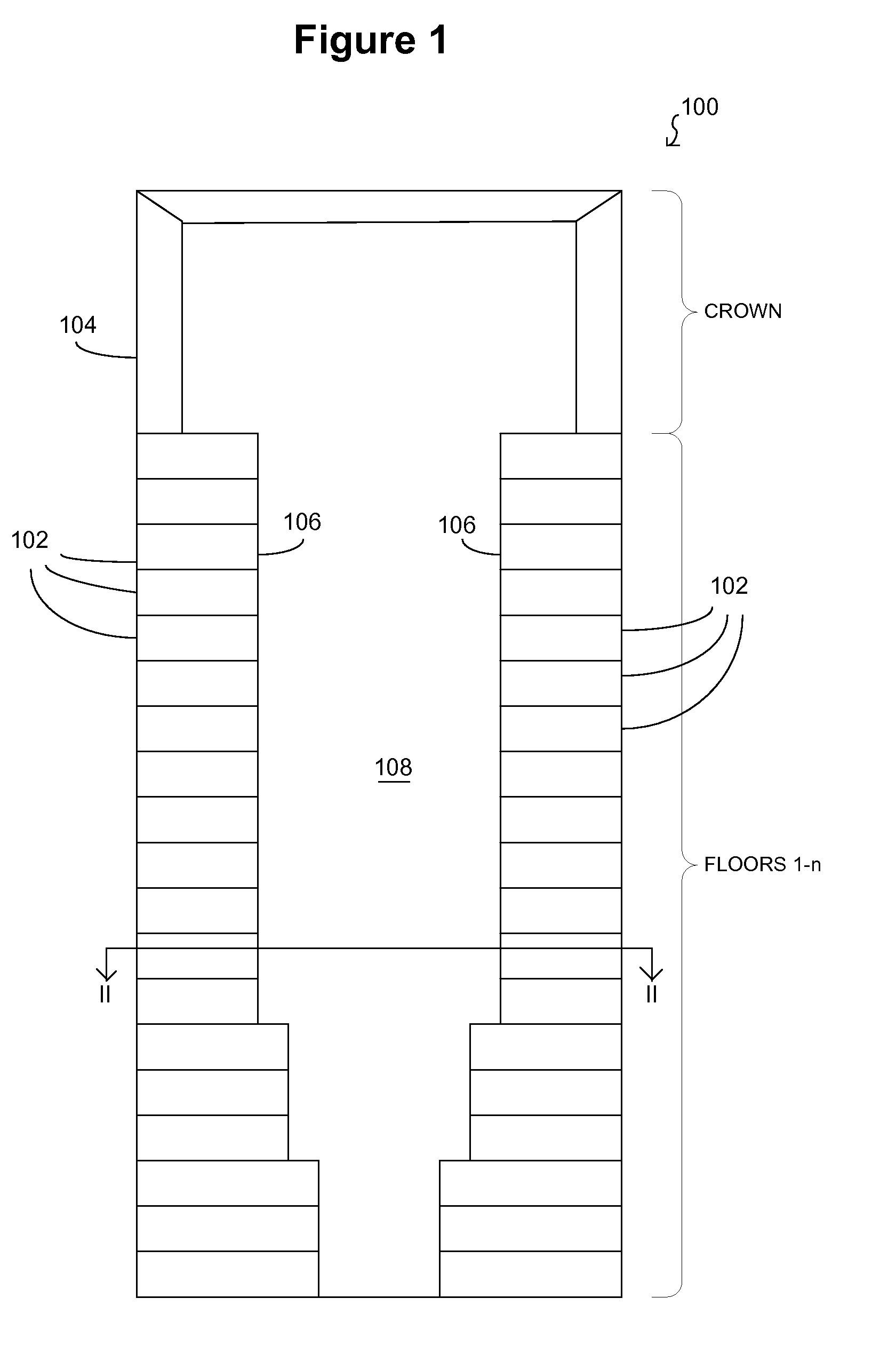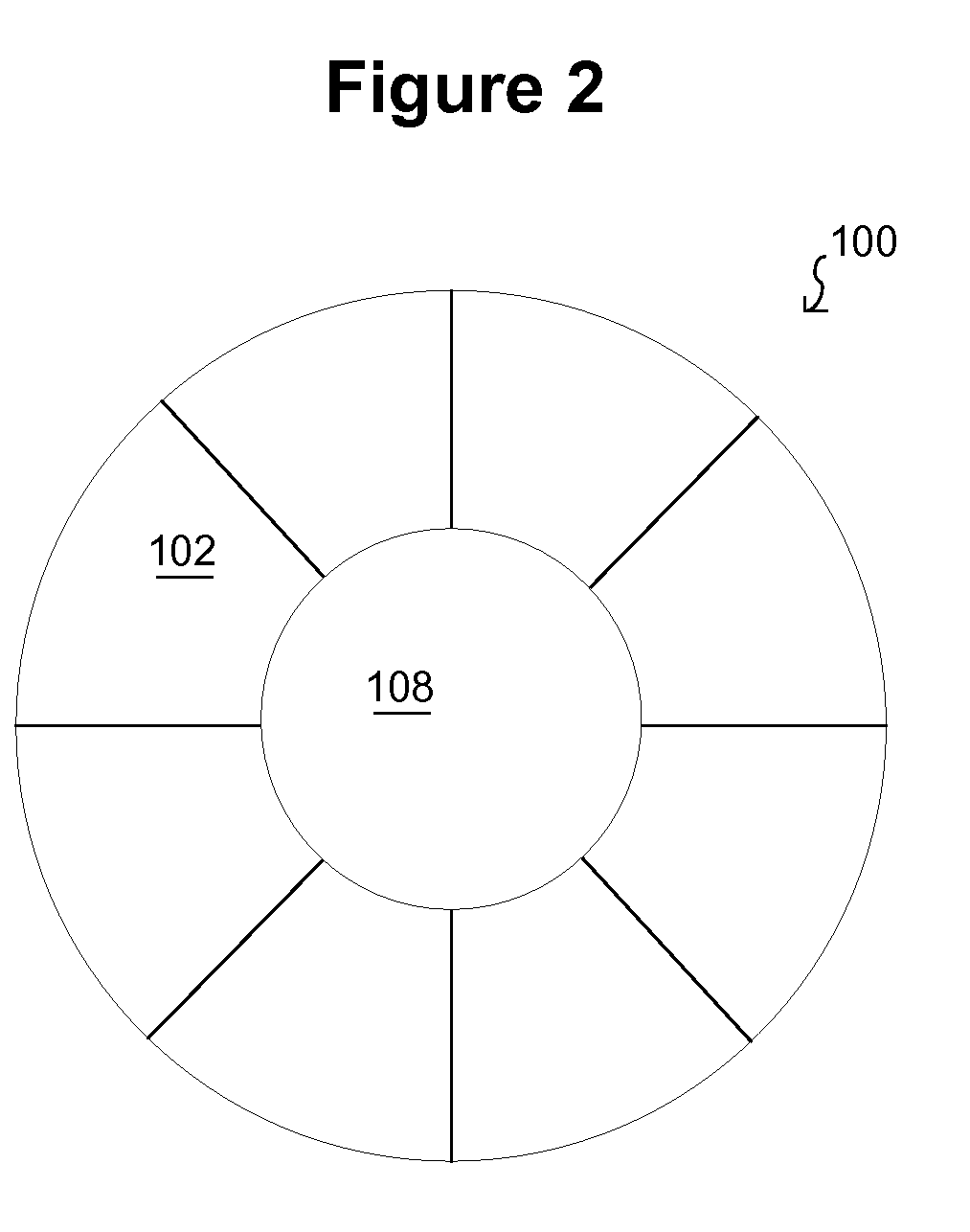Energy efficient building
a building energy and building technology, applied in the field of building energy systems, can solve the problems of low energy efficiency, negative pressure in the core, and high internal load in the lower portion of the building, and achieve the effect of no energy costs, no energy costs, and improved building energy efficiency
- Summary
- Abstract
- Description
- Claims
- Application Information
AI Technical Summary
Benefits of technology
Problems solved by technology
Method used
Image
Examples
Embodiment Construction
[0024]Reference will now be made in detail to an implementation consistent with the present invention as illustrated in the accompanying drawings. Wherever possible, the same reference numbers will be used throughout the drawings and the following description to refer to the same or like parts.
[0025]Methods and systems consistent with the present invention improve building energy efficiency. FIG. 1 is a vertical cross-sectional view of an illustrative building 100 consistent with the present invention. The illustrative building comprises a plurality of floors 1-n of habitable spaces 102 in a lower portion of the building and a crown 104 at an upper portion of the building. The habitable spaces 102 are positioned around an exterior portion of the building. The interior walls 106 of the habitable spaces 102 form the outer boundary of a core 108 or open space at an interior portion of the building. In the illustrative example, the core is an atrium that extends the height of the habita...
PUM
 Login to View More
Login to View More Abstract
Description
Claims
Application Information
 Login to View More
Login to View More - R&D
- Intellectual Property
- Life Sciences
- Materials
- Tech Scout
- Unparalleled Data Quality
- Higher Quality Content
- 60% Fewer Hallucinations
Browse by: Latest US Patents, China's latest patents, Technical Efficacy Thesaurus, Application Domain, Technology Topic, Popular Technical Reports.
© 2025 PatSnap. All rights reserved.Legal|Privacy policy|Modern Slavery Act Transparency Statement|Sitemap|About US| Contact US: help@patsnap.com



